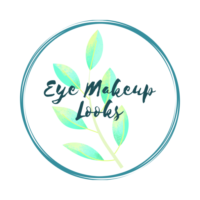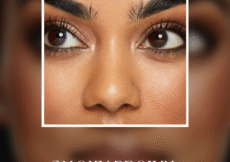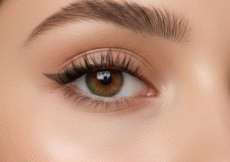In the ever-evolving world of beauty, makeup trends come and go, but few have captured the imagination quite like undereye colored shadow. This innovative technique involves applying vibrant, pigmented eyeshadows or colorful accents directly beneath the eyes, transforming what was once a concealed area into a canvas for creativity. Popularized on platforms like TikTok and Instagram, undereye colored shadow has become a staple for those seeking to add a pop of color, enhance natural features, and break away from traditional eye makeup routines. Whether you’re drawing inspiration from rainbow gradients or subtle pastel hues, this trend offers endless possibilities for self-expression.
Gone are the days when the under-eye area was solely about concealment. Instead, undereye colored shadow embraces and accentuates the natural contours, creating illusions of depth, youthfulness, and even a playful vibe. According to beauty experts, this shift reflects a broader movement toward authentic, inclusive makeup that celebrates individual features rather than masking them. For instance, influencers have turned what might be seen as “imperfections” like dark circles into artistic statements by layering bold colors. If you’re new to this, don’t worry—it’s accessible for beginners and pros alike, requiring just a few key tools and a dash of experimentation.
In this comprehensive guide, we’ll dive deep into everything you need to know about undereye colored shadow. From its origins and benefits to step-by-step tutorials, product recommendations, and troubleshooting tips, you’ll be equipped to try this trend yourself. By incorporating semantic elements like under eye makeup ideas, colorful eye accents, and vibrant shadow techniques, we’ll ensure you understand how this fits into modern beauty practices. Let’s explore why undereye colored shadow is more than just a fleeting fad—it’s a game-changer for eye-enhancing makeup.

Credit: pinterest
What Is Undereye Colored Shadow?
At its core, undereye colored shadow refers to the application of colored eyeshadows, liners, or pigments in the area below the lower lash line. Unlike traditional eyeshadow that focuses on the lids, this trend shifts the spotlight downward, using hues ranging from soft neutrals to electric brights. It’s often blended seamlessly into the skin for a diffused, ethereal effect or applied more precisely for graphic looks.
This technique draws from various influences, including the “aegyo-sal” concept in Korean beauty, where highlighting the under-eye fat creates a youthful, smiley appearance. In Western trends, it’s evolved into bolder expressions, such as the “colorful eye bag” popularized by UK makeup artist Pippa Barnes on TikTok in 2021. Here, instead of hiding dark circles with concealer, creators accentuate them with shades like purple, blue, or even rainbow palettes to make eyes pop.
Semantically, undereye colored shadow aligns with terms like lower lash line enhancement, vibrant under eye accents, and creative eye contouring. It’s versatile for all skin tones and eye shapes, making it inclusive. For example, deeper skin tones might opt for warm oranges or reds to neutralize blueness naturally, while fairer tones could experiment with pastels for a subtle glow. The key is balance—pairing the under-eye color with minimal lid makeup to let the trend shine.
This trend’s appeal lies in its duality: it can be subtle for everyday wear or dramatic for evenings. Imagine a soft pink undereye colored shadow for a fresh, awake look or a metallic green for festival vibes. As beauty routines become more personalized, undereye colored shadow stands out as a way to infuse personality into your makeup arsenal.
The Rise of Undereye Colored Shadow in Makeup Trends
The journey of undereye colored shadow from niche to mainstream is fascinating. Roots trace back to Asian beauty practices, where under-eye shading has long been used to emphasize aegyo-sal for a cute, innocent aesthetic. In recent years, social media amplified it globally. TikTok, in particular, exploded with tutorials in 2021, thanks to creators like Naezrah who showcased colorful undereye looks inspired by viral challenges.
By 2022, the trend evolved into full-spectrum rainbow under eyes, blending multiple colors for a prism effect. Fashion runways and celebrities followed suit—think models at New York Fashion Week sporting jewel-toned under-eye accents. This rise coincides with a cultural shift away from “perfect” skin toward embracing natural textures, including dark circles. No longer is concealer mandatory; instead, undereye colored shadow turns potential flaws into features.
In 2024 and beyond, the trend has matured, incorporating ombré techniques where colors fade from dark to light under the eyes. Semantic searches for “vibrant under eye makeup” and “colorful lower lash shadow” have surged, reflecting its SEO relevance in beauty content. Influencers on platforms like Pinterest highlight its accessibility, noting how it makes eyes appear larger and more expressive. As we move into 2025, expect undereye colored shadow to integrate with AR filters and virtual try-ons, making it even more interactive.
Benefits of Using Undereye Colored Shadow

Credit: tiktok
Why embrace undereye colored shadow? The advantages extend beyond aesthetics. Firstly, it promotes self-acceptance by reframing the under-eye area as an asset rather than something to hide. This can boost confidence, especially for those tired of heavy concealers that crease or look unnatural.
Visually, it creates illusions of brighter, wider eyes. By adding color, you draw attention downward, balancing facial proportions and making features pop. For instance, warm tones like peach can neutralize dark circles naturally, offering a fresh alternative to traditional color correction.
Creatively, undereye colored shadow allows for experimentation without overwhelming the face. It’s low-commitment—easy to remove yet impactful. Health-wise, using lighter products reduces the risk of clogging pores compared to thick concealers. Semantically related benefits include enhanced eye contouring, which can make you look more youthful and energetic, aligning with trends like “weary chic.”
Overall, this trend fosters inclusivity, as it’s adaptable for all ages, genders, and skin types, encouraging a fun approach to makeup.
How to Apply Undereye Colored Shadow: A Step-by-Step Guide
Mastering undereye colored shadow is simpler than it seems. Start with prepped skin: cleanse, moisturize, and apply a primer to the under-eye area for longevity.
Step 1: Choose your color. Opt for complementary shades—blues for brown eyes, pinks for green.
Step 2: Apply a base. Dab a thin layer of concealer or wet concealer if needed, then set lightly with powder to prevent creasing.
Step 3: Add the shadow. Using a small, fluffy brush, gently pat the color along the lower lash line, starting from the inner corner and blending outward. For rainbow effects, layer multiple shades.
Step 4: Blend seamlessly. Use a clean brush or finger to diffuse edges for a soft gradient.
Step 5: Enhance with liner or mascara. Line the waterline if desired, and curl lashes for lift.
Step 6: Set it. A spritz of setting spray locks everything in.
For beginners, practice on one eye first. Common tools include angled brushes and pigmented palettes. This method ensures a flawless, long-lasting undereye colored shadow look.
Best Products for Undereye Colored Shadow
Selecting the right products is crucial for vibrant, crease-free results. For eyeshadows, the Urban Decay Naked palettes offer versatile colors, but for bold hues, try the Huda Beauty Neon Obsessions Palette—its pigmented formulas blend effortlessly under the eyes.
Color correctors like Bobbi Brown Under-Eye Corrector are ideal for basing, available in shades that neutralize while adding tint. Nars Radiant Creamy Color Corrector tops lists for its seamless application on dark circles.
For budget options, L.A. Girl HD Pro Concealer in colorful tones works as a base or standalone shadow. Cream shadows like Maybelline Color Tattoo provide staying power without fallout.
Setting powders such as Laura Mercier Translucent Loose Powder prevent smudging. Always patch-test for sensitive skin.
These products ensure your undereye colored shadow stays put all day.
Variations and Styles of Undereye Colored Shadow
Undereye colored shadow isn’t one-size-fits-all. Subtle styles use nude or bronze for everyday enhancement, mimicking natural shadows.
Bold variations include rainbow ombré, blending reds to blues for a festival-ready look. Graphic lines with neon greens add edge.
Seasonal twists: pastels for spring, deep plums for fall. Pair with glitter for evenings or matte for day.
Adapt for eye shapes—hooded eyes benefit from diffused colors, while almond shapes suit precise applications.
This flexibility makes undereye colored shadow endlessly adaptable.
Common Mistakes to Avoid with Undereye Colored Shadow
Avoid over-application; start light to prevent a bruised look. Don’t skip blending—harsh lines age the eyes.
Using the wrong brush? Opt for soft, synthetic ones to avoid irritation.
Ignoring skin prep leads to creasing; always moisturize.
For color choice, match undertones—cool skins suit blues, warm prefer oranges.
Finally, balance the face; keep lids neutral to highlight the under eyes.
FAQs About Undereye Colored Shadow
What is undereye colored shadow?
It’s a makeup technique applying colorful shadows under the eyes for enhancement and creativity.
Is undereye colored shadow suitable for all skin types?
Yes, but sensitive skins should use gentle, hypoallergenic products.
How do I remove undereye colored shadow?
Use an oil-based remover, gently wiping without rubbing.
Can undereye colored shadow replace concealer?
It can accentuate rather than conceal, but layer over concealer for hybrid looks.
What colors work best for beginners?
Start with soft pinks or neutrals before bold hues.
Does undereye colored shadow make eyes look tired?
No, when done right, it brightens and lifts the appearance.



